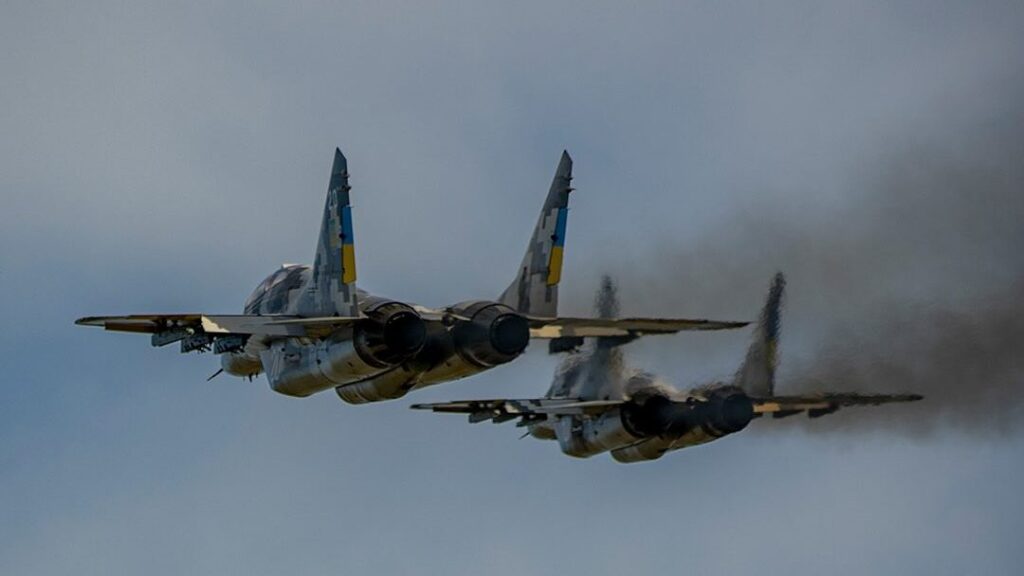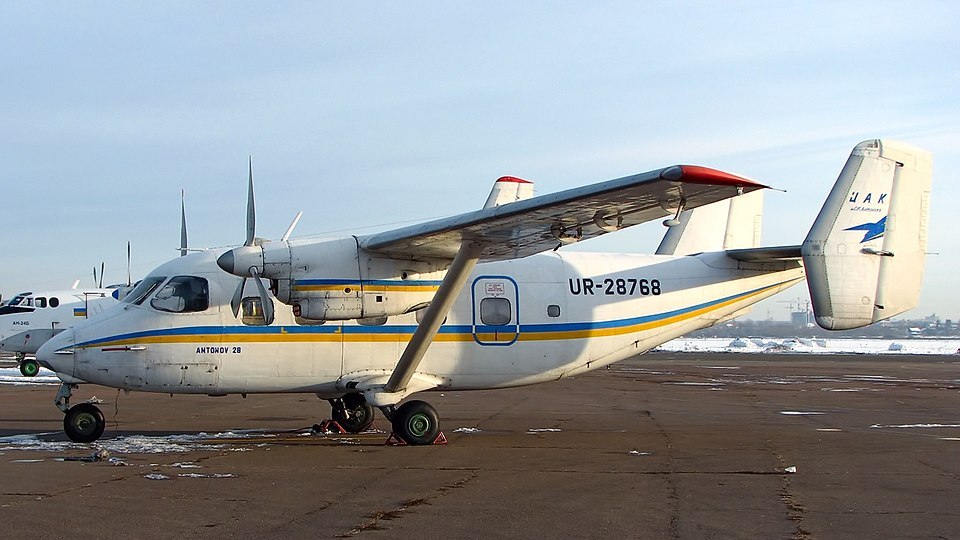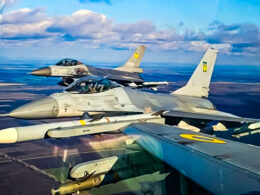- Ukraine could acquire Swedish Gripen fighter jets
- The supersonic jets are designed to fly from small airstrips and even lengths of road
- The design is not accidental: the Cold War-era planes needed to survive potential Soviet bombardment
- Dispersing to these alternative bases helps warplanes escape Russian bombardment
The Ukrainian air force may eventually re-equip with Saab Gripen E/F fighters.
The nimble supersonic jets are uniquely suited to the Ukrainian way of war, which requires the air force to spread far and wide across small airfields and even roadway airstrips in order to avoid attack.
This matters because Ukraine's jets keep flying by avoiding big, vulnerable air bases—dispersing instead to highways and hidden strips across the country. But this survival strategy puts intense pressure on the aircraft. While Ukrainian brigades can coax American F-16s into this nomadic existence, it requires mobile support teams and kid-glove treatment.
The Gripen doesn't—it's built for rough-field warfare. Sweden designed the jet in the 1980s specifically to survive Soviet strikes on air bases, operating instead from highway strips scattered across the country.
Ukrainian Pres. Volodymyr Zelensky met with Swedish Prime Minister Ulf Kristersson in Helsinki on Wednesday in order to discuss the deal. "We expect that the future contract will enable us to obtain at least 100 of these jets," Zelensky said.
"We are looking into how this can be financed," Swedish defense minister Pål Jonson said of the potentially multi-billion-dollar acquisition.
It could take years for the first Gripens to arrive in Ukraine. If and when they do, they should fit right in.
Why dispersed operations keep Ukraine's air force alive
The Swedish fighter is specifically designed to fly from short, rough airstrips—just like the Ukrainian air force's current, mostly ex-Soviet, fighters do—all in order to avoid detection by Russian drones and bombardment by Russian missiles.
This difficult but critical dispersal practice is the main reason why the Ukrainian air force is still in the fight 44 months into Russia's wider war. Many of the jets the Ukrainians have lost have been hit at the air force's main air bases, which are big, vulnerable and well-known to Russian strike planners.
The Ukrainian jets that have survived are the ones that have avoided the big bases—and flown from small civilian airfields and long stretches of highway, instead.
Key survival factors for Ukrainian aircraft:
- Ability to operate from highways and improvised strips
- Short takeoff distances under 500 meters
- Protection against foreign object debris (FOD)
- Rapid dispersal to avoid concentrated Russian strikes
- Minimal ground support equipment requirements
How Soviet-era jets handle rough-field operations
Ukraine's main warplane, the Soviet-made Mikoyan MiG-29, is adept at dispersed operations.

As a supersonic MiG-29 touches down on its reinforced landing gear, doors close over its gaping air-intakes while gates open on top of the intakes. This system prevents rocks and other "foreign object debris," or FOD, from wrecking the jet's engines while it's operating from a dirty airstrip or roadway.
Similar anti-FOD systems are standard on the Soviet-style jets that equip Ukraine's air force: not just MiG-29s, but also Sukhoi Su-24 bombers, Su-25 attack jets, and Su-27 interceptors.
The planes' robustness and short runway requirements—a MiG-29 needs just 300 m or so—is why they've endured in Ukrainian service.
Why American F-16s struggle with Ukrainian conditions
Trending Now
Ukraine's Western-made planes are needier and less rugged. American-designed Lockheed Martin F-16s in particular are ill-suited for ops from debris-cluttered runways.
They have no anti-FOD system. And their gaping under-fuselage intakes practically gobble up dirt and rocks. While Ukrainian brigades do fly the F-16 from dispersed airstrips, they do so with great care. It's not for no reason the air force has assembled special mobile units with all the support equipment you'd need to launch and land a delicate F-16 on a dirty runway.
Equally vexing, an F-16 needs 800 m of runway to take off at full weight.
The Gripen, by contrast, is a tough, spritely little plane—making it better for dispersed ops. It doesn't have the anti-FOD doors that a MiG does, but it does boast tall landing gear that helps keep it clear of debris. And thanks to its thrust-reverser and canards, which double as brakes, it can operate from 500 m of clean surface.
Sweden's approach came from its "Bas 90" system—a network of highway strips, hidden fuel caches, and minimal infrastructure designed to survive Soviet bombers wiping out traditional air bases. Swedish planners envisioned mechanics working from trucks while Gripens took off from 500-meter stretches of road between refuelings.
That Cold War nightmare never materialized for Sweden. But Ukraine is living it now.
Comparing fighter jets for dispersed operations
| Aircraft | Runway length needed | FOD protection | Design purpose | Ukrainian fit |
|---|---|---|---|---|
| MiG-29 | ~300 m | Top-mounted intake doors | Soviet rough-field ops | Excellent - proven in service |
| F-16 | ~800 m | None | Prepared NATO airfields | Poor - requires special care |
| Gripen E/F | ~500 m | Tall landing gear | Swedish Cold War dispersal doctrine | Excellent - purpose-built |
📱 Scroll horizontally to see all columns on mobile
The strategic case for choosing Gripen
As long as Russia is the main threat to Ukrainian security, Ukrainian warplanes must operate within range of long-range drones and cruise and ballistic missiles that can turn big air bases into kill zones.
Dispersal will be the key to their survival. The fighter that disperses the best is the obvious best choice for Ukraine's main future warplane.
The jet Sweden designed to hide from Russian missiles in the 1980s may soon face them for real—40 years later, over Ukrainian skies rather than Swedish forests.
| Aircraft | Runway length needed | FOD protection | Design purpose | Ukrainian fit |
|---|---|---|---|---|
| MiG-29 | ~300 m | Top-mounted intake doors | Soviet rough-field ops | Excellent - proven in service |
| F-16 | ~800 m | None | Prepared NATO airfields | Poor - requires special care |
| Gripen E/F | ~500 m | Tall landing gear | Swedish Cold War dispersal doctrine | Excellent - purpose-built |
📱 Scroll horizontally to see all columns on mobile







